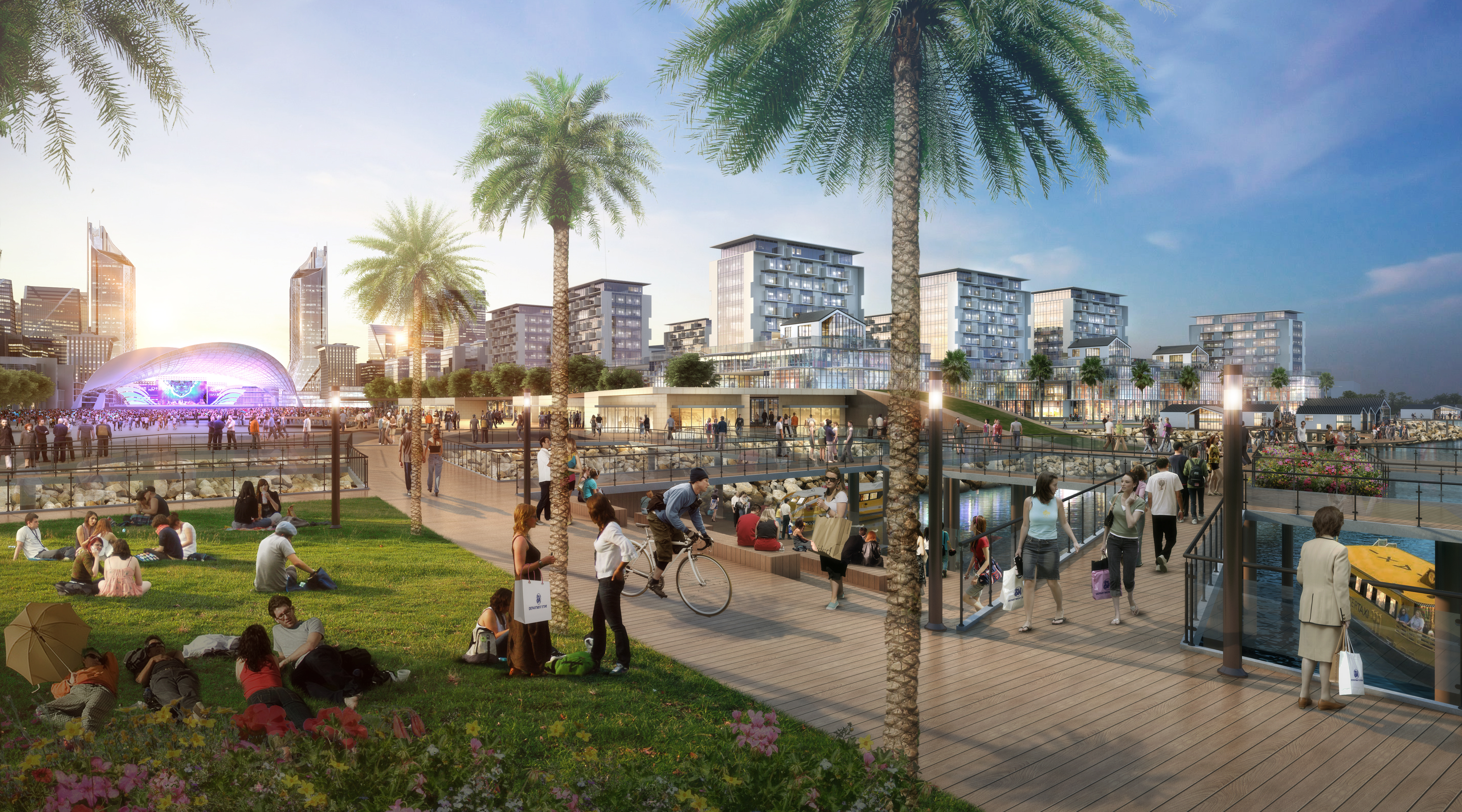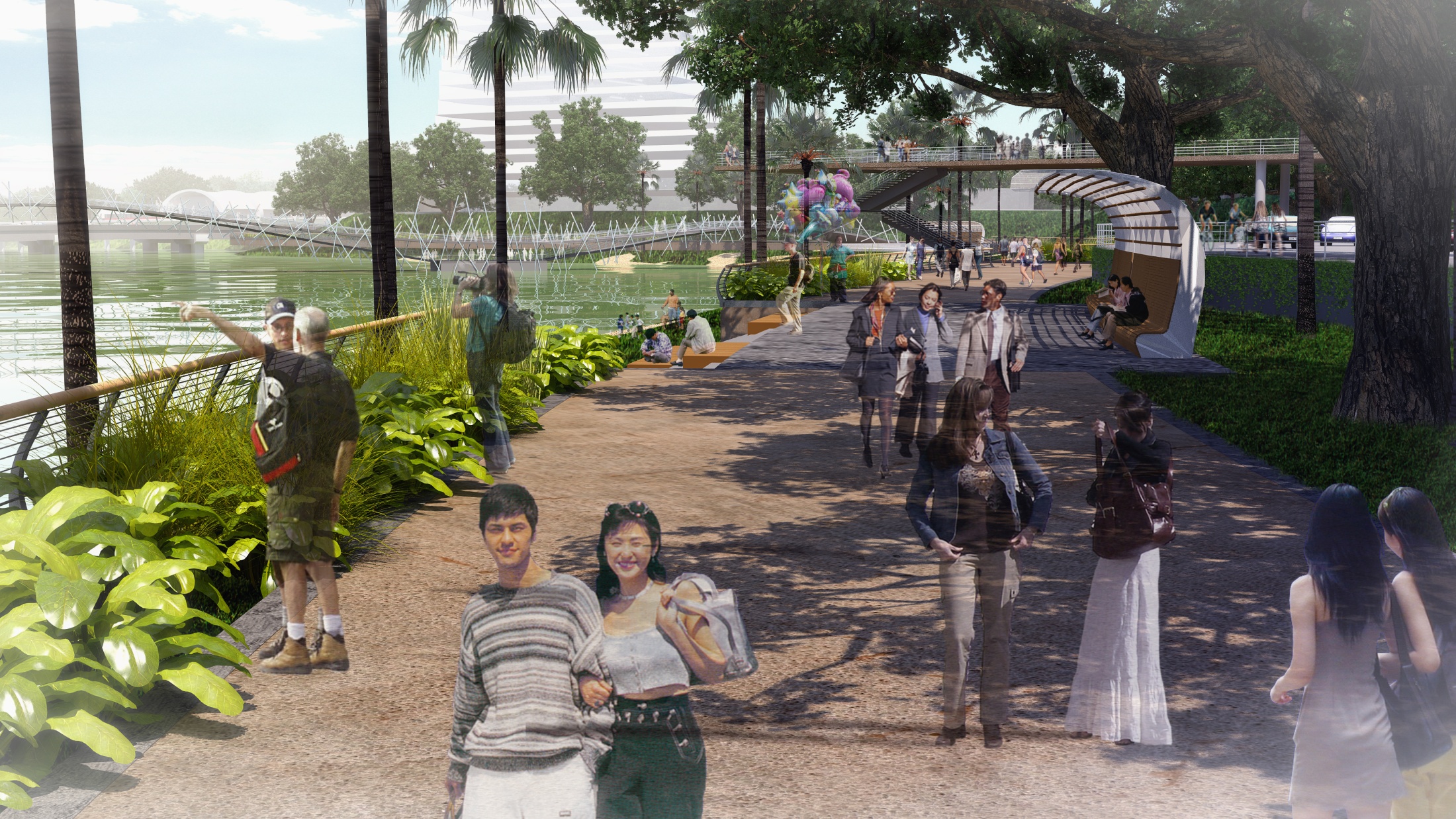Designing Waterfront Developments for Modern Urbanscape

In recent times, more people have started to develop a deeper appreciation for outdoor spaces and their provision of physical and mental health benefits, especially after the pandemic hit. As people everywhere seek spacious public spaces that the community can enjoy, there is even more interest in waterfront developments. To many, the attraction of an urban waterfront landscape never ceases. In Asia, for example, the fascination with waterfront images can be seen in a multitude of local waterfront scenes painted by artists over many generations.
Urban planners are acutely aware that waterfront developments provide social, psychological, and health benefits to communities when done right. They also contribute to the surrounding developments, as it improves access via upgraded infrastructure, and recreates city skylines - which enhances land value, elevates a city's image, and defines the character of the urbanscape.
Design Considerations of Present
With urbanisation being a key contributor to climate change, there has been an increased awareness of sustainable agendas and the preservation of natural heritage from the public through greater access to information.
The contributing factors and consequences of climate change pose numerous challenges for many cities worldwide, making it essential to consider urban planning as an integral part of fighting climate change. It is essential to consider the need for climate adaptation when considering the planning, design, and execution of waterfront developments.
At CPG, our Urban Planning team has identified, through our project experiences, three fundamental factors for creating successful urban waterfront spaces: nature-based solutions, multifunctional spaces, and measurable designs. These three factors anchored and guided our planning process in significant projects such as the Maluanwan New District Central Island in Xiamen and Van Giang Eco Park in Hanoi, Vietnam.
Xinweisha Wetland Park – An Application of Nature-based Solutions
Nature-based solutions are one of the key trending methods that the industry is looking at when it comes to improving waterfront developments and public spaces. In many cities, urban planners are looking for ways to rehabilitate previously neglected open spaces and waterfront developments.
Water Sensitive Urban Design (WSUD) is an urban development approach that aims to utilise the hydrological impacts of urban development on the environment. Stormwater is reused through better urban planning and design to reduce harm to existing waterways, because of that, WSUD is a beneficial approach that can be utilised for waterfront developments.
The CPG Urban Planning team adopted the WSUD approach and tools in our projects. In Xi'an city, (Shanxi Province, China), we worked on the Xinweisha Wetland Park project, which aimed to address water management challenges such as flooding and water quality using nature-based solutions. Based on the concept and approaches of “FRESH, CLEAN, and PLAY”, we focused on creating flexibility and resilience for the flood-prone site while also building a place for residents to stay active.
The Xinweisha Wetland Park matched China’s Sponge City construction indicators and guidelines of water runoff and water quality, validating that our concept plan and schematic design implementation were a success when the project was completed in 2020.

Xinweisha Wetland Park, Xi'an city (Shanxi Province, China) in 2020
Manila Bay – A Showcase of Multifunctional Spaces
Another key trending method is the use of multifunctional solutions and the flexibility of their use for community engagement, multipurpose amenities and event spaces.
In this technological era, more people experience technology fatigue due to an increased reliance on smart devices and a lack of social interaction. These led to a more robust demand for urban planners to prioritise recreational areas so that people can partake in community activities in public spaces.
In a Land Reclamation Project in Manila Bay in 2020, we created the Urban Design Guidelines (UDG) to facilitate the expression of the different neighbourhood identities and anchor activities that represent and preserve the community’s character and experiences.
Multifunctional spaces that we proposed include the “Celebration Bridge”, a bridge that connects the mainland to the new waterfront island and serves as a pedestrian crossing and an events platform. Another example is “Central Park”, a collaborative space connecting the canal and the seafront. We also proposed a man-made beachfront, which can serve as a sea and air transportation node for seaplanes and water taxis.

The “Celebration Bridge” (Manila Bay) connects the mainland to the new waterfront island
Kallang Riverside – An Exemplar of Measurable Designs
Measurable designs, particularly those using quantitative and qualitative parameters also contribute to a quality waterfront. In 2014, while working on the Kallang Riverside Conceptual Study in Singapore, we sought to create a measurable waterfront public open space through innovation in design and planning paradigms.
Using an Evidence-Based Planning approach, we first started a paradigm consisting of ecological landscape, sustainable infrastructure, and responsive urbanism. Based on this new paradigm, we set up a quantitative environmental and economic matrix, which considers construction costs, replacement and demolition costs, maintenance costs, habitat creation, and air quality. We also built a qualitative matrix, which pays extra attention to factors such as education and awareness, general aesthetic appeal, new lifestyle options, recreational spaces, a landmark for hosting events, reduced energy consumption and carbon emissions.

The WSUD approach was used in the Kallang Riverside project
By adopting a measurable design approach, this hydrology and landscape-driven masterplan provided an extension of Singapore’s waterfront, with the ability to expand as a growing city centre. It is a notable example of a destination for integrated waterfront living and recreation through the lens of water management and infrastructure.
As we continuously learn to refine our approach, our team uses our expertise and knowledge learnt from local and overseas projects to lead and act as a catalyst for inspiring other urban planners and cities to achieve the best practices in bringing new life to waterfront developments and public spaces. With the rapid transformation of our urbanscape, we as urban planners must keep up with the latest industry developments and evolve in our designs to contribute to more dynamic urban waterfront developments.
By: CPG Urban Planning Division



